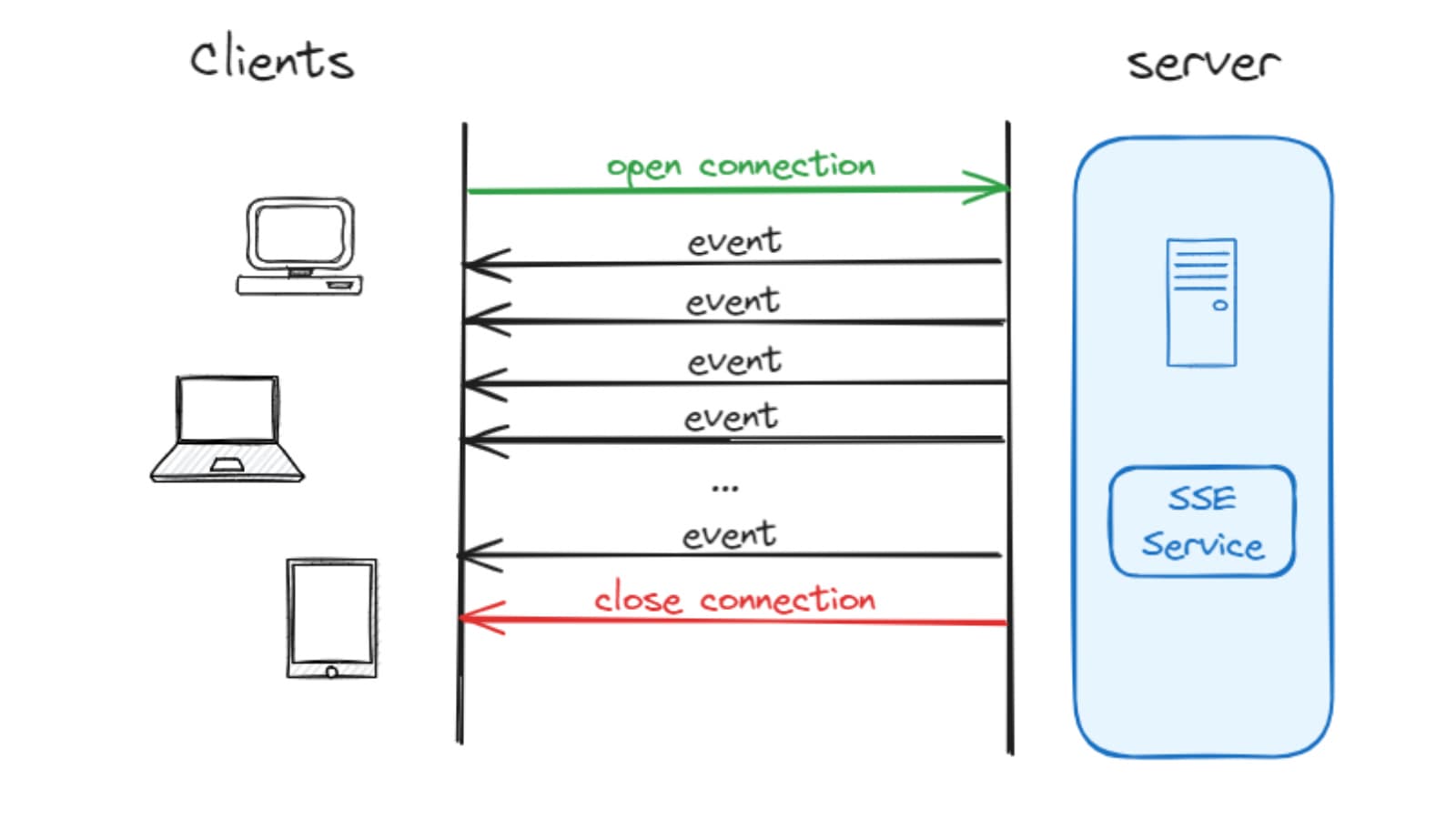How to keep clients updated in real time with Server-Sent Events
What is Server-Sent Events (SSE)?
Server-Sent Events (SSE) is a cool technology that allows a server to send real-time updates directly to your web browser or any client-side application through a simple HTTP connection.
Imagine you're watching a live sports game on your tablet. Every time a player scores, the score updates automatically on your screen without you needing to refresh the page. That's SSE in action, making sure you get those updates instantly.

Key Features of SSE
1. Real-Time Communication
Unlike the usual request-response model where the client keeps asking the server for updates, SSE allows the server to continuously send updates to the client. This is perfect for things like live sports scores, stock market updates, or data from smart home devices.
2. Built on Standard HTTP
SSE works over the regular HTTP protocol, making it easy to implement in any web application. The client starts by sending a simple GET request to the server.
3. Efficiency and Performance
SSE keeps a single connection open to send updates as soon as they're available. This means less waiting and lower latency because the server doesn't need to keep re-establishing connections.
4. Simplicity and Browser Support
SSE is easier to set up compared to other real-time data solutions like WebSockets. Most modern browsers, including Firefox, Chrome, Opera, and Safari, support SSE. The messages are sent as simple text, making the format easy to understand and work with.
Comparing SSE with Other Technologies
Polling
Polling is like a kid constantly asking, "Are we there yet?" The client keeps sending requests to the server to check for updates. There are two types:
- Short Polling: Sends requests frequently.
- Long Polling: Holds the request open until an update is available.
Polling can be inefficient because it involves a lot of back-and-forth. In contrast, SSE keeps one connection open, allowing the server to send updates whenever they're ready. This is more efficient and reduces the constant overhead of new HTTP requests.
WebSockets
WebSockets offer two-way communication, meaning both the client and server can send messages to each other over a single connection. This is great for things like live chat apps or collaborative tools. However, SSE is designed for one-way communication from the server to the client, making it simpler and more efficient for scenarios where the client doesn't need to send data back to the server. SSE also works over standard HTTP, which simplifies its use in web applications.
Webhooks
We use Webhooks for server-to-server communication. By triggering HTTP callbacks to external servers when specific events happen. These are different from Service-Side-Events (SSE) used in sending the updates straightaway from the server to the client within web apps. SSE is ideal for updating the user interface in real time without managing multiple external servers.
Each technology has its strengths, but the choice depends on what your application needs. SSE is excellent for sending real-time updates from the server to the client in a simple, efficient manner. It's easy to use and perfect for applications where you need continuous updates without the client constantly asking for new data.
So, next time you see a live score update or a stock price change in real-time, there's a good chance that SSE is working behind the scenes to make that happen seamlessly.